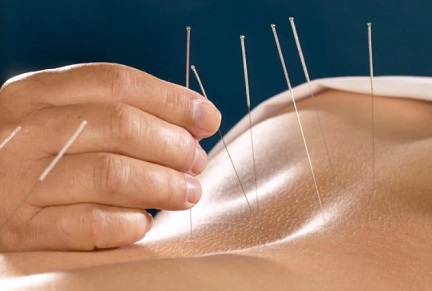New Hope for Nerve Injury Recovery: Combining Traditional Chinese Medicine with Modern Biomaterials
Nikhil Prasad Fact checked by:Thailand Medical News Team Jun 14, 2024 10 months, 5 days, 4 hours, 58 minutes ago
TCM News: Peripheral nerve injuries (PNIs) are a significant medical challenge, often leading to lifelong disabilities. Traditional Chinese Medicine (TCM) has long been used to treat these injuries, but recent advances in biomaterials offer new hope for more effective treatments. This
TCM News report explores how the combination of TCM and modern biomaterials could revolutionize nerve injury recovery. This study was conducted by researchers from the Second Rehabilitation Hospital of Shanghai-China, Shanghai University of Traditional Chinese Medicine-China and the Shanghai Shuguang Hospital Affiliated to Shanghai University of Traditional Chinese Medicine-China.
 New Hope for Nerve Injury Recovery: Combining Traditional
New Hope for Nerve Injury Recovery: Combining Traditional
Chinese Medicine with Modern Biomaterials
Understanding Peripheral Nerve Injuries
Peripheral nerve injuries occur when nerves outside the brain and spinal cord are damaged. These injuries can lead to severe pain and disability, affecting the motor and sensory functions of the limbs. The primary goal in treating PNI is to promote nerve regeneration and prevent muscle atrophy due to denervation.
Traditional Chinese Medicine in Nerve Injury Treatment
TCM has been used for centuries to treat various ailments, including nerve injuries. Methods such as acupuncture, Tuina (a form of therapeutic massage), and the use of herbal medicine have shown promising results in clinical settings. These techniques focus on stimulating nerve cells, promoting blood circulation, and reducing inflammation, which are crucial for nerve repair and regeneration.
Acupuncture
Acupuncture involves inserting fine needles into specific points on the body to stimulate nerve activity and promote healing. Studies have shown that acupuncture can improve blood flow, reduce inflammation, and enhance the repair of nerve tissues. By targeting specific acupoints, acupuncture helps to reestablish the connection between nerves and muscles, aiding in functional recovery.
Tuina Massage
Tuina is a form of therapeutic massage that applies pressure and manipulation techniques to specific areas of the body. This therapy has been found to slow down muscle atrophy and enhance nerve regeneration. Research indicates that Tuina can influence brain activity and improve motor function by promoting plasticity in the brain and spinal cord.
The Role of Biomaterials in Nerve Repair
In recent years, novel biomaterials have emerged as powerful tools in medical treatments. These materials, such as hydrogels, microfluidic platforms, and chitosan scaffolds, offer new ways to support nerve regeneration and repair. Biomaterials can be used to create scaffolds that guide nerve growth, deliver drugs directly to injured areas, and provide structural support to regenerating tissues.
Hydrogels and Scaffolds
Hydrogels are water-based gels that can be used to
create scaffolds for tissue engineering. These scaffolds provide a supportive environment for nerve cells to grow and regenerate. Chitosan, a natural biopolymer derived from chitin, is another material used to create scaffolds. Chitosan scaffolds have been shown to promote nerve regeneration and improve functional recovery in animal models of nerve injury.
Microfluidic Platforms
Microfluidic platforms are miniature devices that can simulate the complex environment of nerve tissues. These platforms allow researchers to study nerve regeneration in a controlled setting, providing valuable insights into the mechanisms of nerve repair. By combining TCM techniques with microfluidic platforms, scientists can better understand how to optimize treatments for nerve injuries.
Integrating TCM and Biomaterials for Enhanced Treatment
The combination of TCM and biomaterials offers a holistic approach to nerve injury treatment. TCM techniques can be used to enhance the effectiveness of biomaterials, while biomaterials can provide a more controlled and targeted delivery of TCM therapies.
Synergistic Effects
Studies have shown that integrating TCM with biomaterials can lead to better outcomes than using either approach alone. For example, acupuncture combined with biomaterial scaffolds can promote nerve regeneration more effectively by providing both physical and biochemical support to injured nerves. Similarly, Tuina massage can enhance the effects of biomaterials by stimulating blood flow and reducing inflammation.
Precision Medicine
One of the significant advantages of combining TCM with biomaterials is the ability to tailor treatments to individual patients. Biomaterials can be customized to deliver specific drugs or support structures based on the patient's unique needs. This precision medicine approach ensures that patients receive the most effective treatment for their specific type of nerve injury.
Future Directions and Research
The integration of TCM and biomaterials is still in its early stages, but the potential for this approach is immense. Future research will focus on understanding the molecular mechanisms behind TCM therapies and optimizing the design of biomaterials to enhance their effectiveness. Clinical trials will be essential to validate these new treatment methods and ensure their safety and efficacy.
Conclusion
The combination of traditional Chinese medicine and modern biomaterials represents a promising frontier in the treatment of peripheral nerve injuries. By harnessing the strengths of both approaches, researchers and clinicians can develop more effective and personalized treatments for patients suffering from nerve damage. As research progresses, this integrative approach could significantly improve the quality of life for those affected by nerve injuries, offering new hope for recovery and rehabilitation.
The study findings were published in the peer reviewed journal: Frontiers in Neurology.
https://www.frontiersin.org/journals/neurology/articles/10.3389/fneur.2024.1421772/full
For the latest
TCM News, keep on logging to Thailand Medical News.
Read Also:
https://www.thailandmedical.news/news/new-hope-for-kidney-recovery-traditional-chinese-medicine-s-role-in-renal-regeneration
https://www.thailandmedical.news/news/new-hope-for-colorectal-cancer-treatment-traditional-chinese-medicine-takes-the-spotlight
